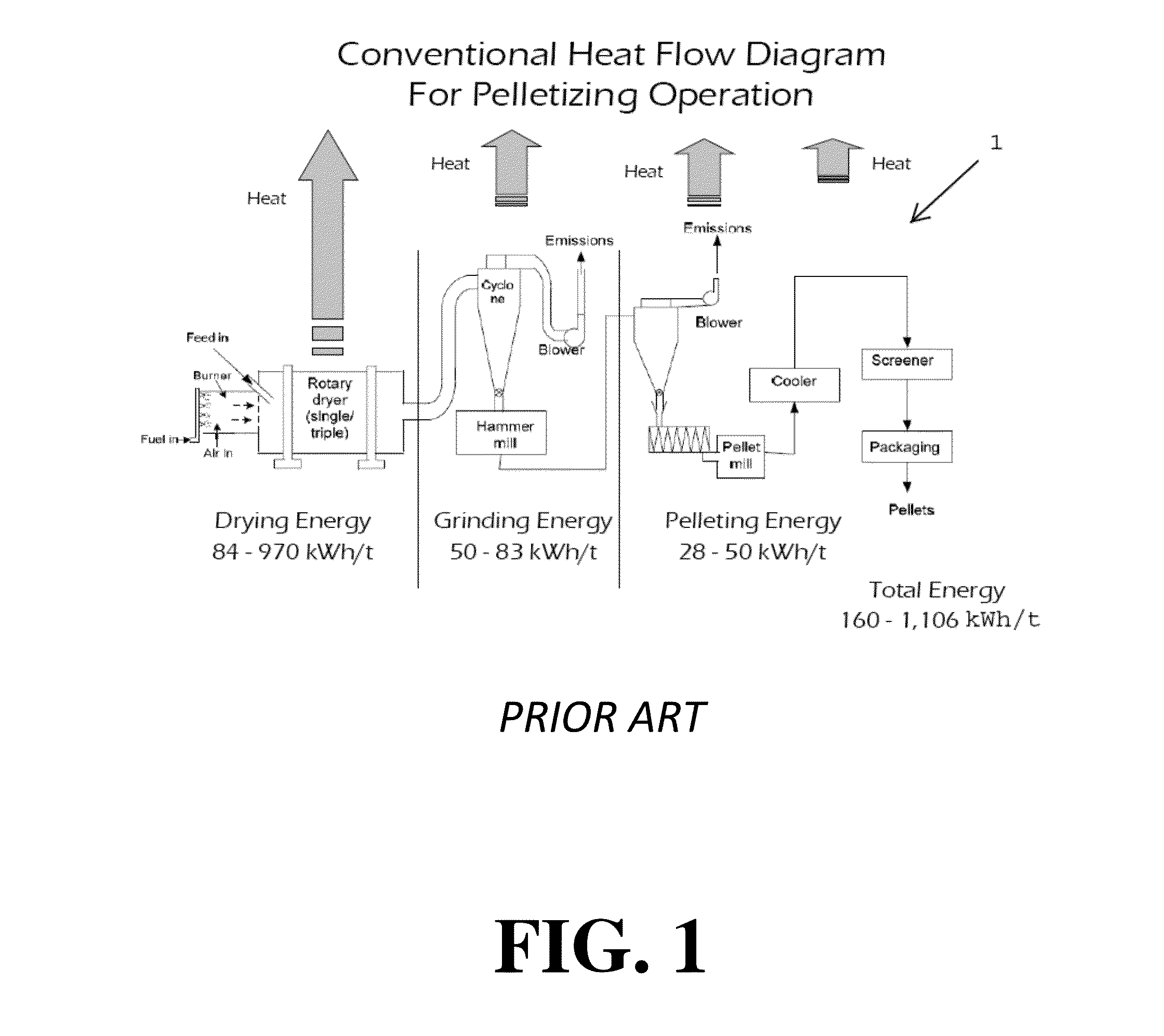Mobile Pelletizing System
a pelletizing system and mobile technology, applied in the field of mobile pelletizing systems, can solve the problems of wasting residual energy used in individual processing steps, occupying 20% of the total cost of pellets, and being most energy-intensive, and achieve the effect of new adaptability of component parts
- Summary
- Abstract
- Description
- Claims
- Application Information
AI Technical Summary
Benefits of technology
Problems solved by technology
Method used
Image
Examples
examples
[0097]Die Design Extrusion Experiments
[0098]Since the die design's novel capabilities are key to optimizing pelletizing efficiency in certain embodiments, a series of experiments were done to study various changes to the die chamber for pelletizing. It was determined by these experiments that using other methods of construction for the die head of the pellet mill allows very different geometry possibilities beyond the standard reamed holes disclosed. For example, one experiment examined whether gradual tapers may mitigate some of the friction at the interface of the dies where the compression of the material begins. A second concept was studied wherein vents were introduced to the die chamber to release any unwanted matter, such as water. These concepts are shown in FIG. 17A.
example i
[0099]The extrusion mechanism was tested using the Nozzle Stack Assembly 7410. The assembly (shown in FIG. 17B) has a series of vents in the body of the die to allow the escape of moisture and steam while the material is under pressure. Ambient temperature was 55 F. No heat was used for either the die or the feedstock material. Feedstock was raw White Oak sawdust from using a chainsaw. Hydraulic pressure was set at 1700 psi. Material was fed into the chamber while the extrusion piston was cycled up and down using limit switches at either end of the stroke and a delay timer on the upper end of travel to allow feedstock to enter the chamber. Some of the feedstock fell through the Nozzle Stack at the beginning of cycling. This was blocked to allow the material to build up inside the stack. After the material began to compress in the stack, moisture in the form of water droplets came out of the side holes as predicted. This moisture indicated that the venting was functioning correctly a...
example ii
[0102]The extrusion mechanism was tested using the Nozzle Stack Assembly 7410. In this example, the piston diameter was reduced to about 0.45 square inches and the cylinder was sleeved to the same size. The nozzle stack was extended at the bottom and the top three segments were removed. This change was made to reduce the overall compression ratio at the throat. Ambient temperature was 45 F. No heat was used for either the die or the feedstock material. Hydraulic pressure was set at 1700 psi.
[0103]Material was fed into the chamber while the extrusion piston was cycled up and down using limit switches at either end of the stroke and a delay timer on the upper end of travel to allow feedstock to enter the chamber. Feedstock was raw White Oak sawdust from using a chainsaw and a variety of chopped dead leaves soaked in water (mainly Oak and Maple). The leaves were fed through without any sawdust. They exited the nozzle quite easily as there was little compression. The leaves did not form...
PUM
| Property | Measurement | Unit |
|---|---|---|
| particle sizes | aaaaa | aaaaa |
| particle sizes | aaaaa | aaaaa |
| size | aaaaa | aaaaa |
Abstract
Description
Claims
Application Information
 Login to View More
Login to View More - R&D
- Intellectual Property
- Life Sciences
- Materials
- Tech Scout
- Unparalleled Data Quality
- Higher Quality Content
- 60% Fewer Hallucinations
Browse by: Latest US Patents, China's latest patents, Technical Efficacy Thesaurus, Application Domain, Technology Topic, Popular Technical Reports.
© 2025 PatSnap. All rights reserved.Legal|Privacy policy|Modern Slavery Act Transparency Statement|Sitemap|About US| Contact US: help@patsnap.com



